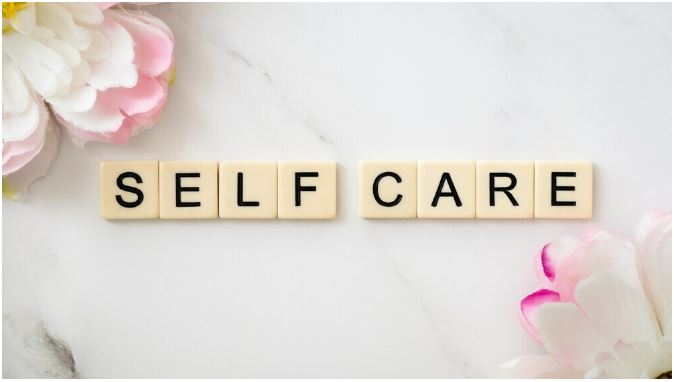How to Start Using Sound Healing As A Holistic Approach
Let’s step into a serene space, leaving behind the clamor of the day-to-day. Here, in the midst of resonance and vibration, lies an ancient practice that’s catching the attention of modern wellness enthusiasts: it’s called sound healing or sound therapy. But do not be fooled. It’s not just about listening to soothing tunes (even though listening to your favorite song can be a form of therapy in itself 🙂 ). Sound healing is an ancient practice that uses to promote emotional and physical well-being. It operates on the premise that all matter, including the human body, vibrates at specific frequencies, and these vibrations can influence our own energy centers, called ‘chakras’.
Humans have long believed in music’s power to heal and transform. From the rhythmic drumming of tribal ceremonies to the chanting of monks, sound has been a vessel for therapeutic and spiritual journeys throughout history. It’s only natural that I’m drawn in by the promise of tranquility and the potential for a more balanced state of being.
Now, I want to share this knowledge with you. As we explore using sound healing as a holistic approach together, you’ll discover its essence and understand how it’s more than just an auditory experience—it’s a full sensory immersion. Let’s prepare to learn about the captivating world of sound healing.
Understanding Sound Healing as a Holistic Approach to Overall Healing
As you know, Holistic health is a multifaceted approach to well-being that acknowledges the interconnectedness of the body, mind, and spirit. Sound healing fits perfectly into this paradigm, recognizing that every aspect of human life can be influenced by resonant frequencies. At its core, sound healing operates on the principle that certain frequencies and vibrations can impact physical, mental, and emotional states, bringing the individual into a more balanced, harmonious condition. How do you feel when you hear certain songs?
Sound healing is distinct from general music therapy because it intentionally harnesses specific frequencies and rhythms to resonate with the body’s own.
When we talk about ‘healing,’ we are not just referring to the mending of physical ailments, but to the alignment of the entire human experience. Imagine the body as a finely tuned instrument – a violin or a cellist’s bow – with sound acting as the universal force that tunes and invokes the inherent healing mechanisms.
Different cultures have tapped into the power of sound for centuries, using chants, bowls, drums, and other instruments to facilitate healing. In sound healing sessions today, facilitators may use a variety of sounds that range from the binaural beats in meditation music to the resonating hum of Tibetan singing bowls.

What is Sound Healing?
Sound healing, as a part of vibrational medicine, uses the principles of sound and vibration to restore the body’s natural harmonies. It encompasses a wide range of techniques and tools, from the harmonics of the human voice to the resonance of quartz crystal bowls. The central premise is that when the body is out of tune, sickness, stress, and other imbalances can occur. Sound healing aims to retune the body, using specific frequencies and instruments to create an environment for healing to occur.
The Physiological and Psychological Effects of Sound Healing
The effects of sound healing on the body are profound.
Physiological
Physically, sound healing operates on the principle that every cell in your body vibrates at different frequencies. When these frequencies are out of sync, it might lead to discomfort or illness. Enter sound therapy: it uses specific vibrations to resonate with the body’s cells, promoting optimal frequency alignment. This has been linked to benefits such as reduced muscle tension and improved circulation.
Psychological
Psychologically, the effects are equally compelling. Engaging with therapeutic sounds can influence brainwave patterns. This can lead to states of deep relaxation akin to meditation, which may help alleviate stress and anxiety. Imagine a sound bath washing away your worries – that’s the mental reset that sound healing can offer.
One scientific viewpoint is that sound healing works by entrainment, the process where vibrational frequencies cause the brainwave activity to synchronize with the rhythm. Scientists believe that this synchronization can help create a more stable and balanced baseline, leading to a range of positive effects.
How to Incorporate Sound Healing Into a Holistic Routine
Incorporating sound healing into a holistic health routine is a personal journey, one that can be as simple as setting an intention to listen to certain frequencies each day or as involved as creating a dedicated sound space in your home. Here are a few steps to get started:
Understand the Sound Tools Available
Explore the myriad of sound tools available, from traditional instruments like tuning forks and Tibetan singing bowls to contemporary applications such as binaural beats and sound baths. Each has its unique characteristics and potential for healing.
Create a Sound Sanctuary
Designate a space in your home that is free of distractions where you can engage in sound healing practices. This might involve setting up an altar with your chosen instruments or simply clearing a quiet area where you feel most comfortable.
Related Post: How To Create A Sacred Space At Home For Holistic Healing
Explore Sound Frequencies
Educate yourself on the different frequencies used in sound healing and the specific benefits associated with each. For example, the ancient Solfeggio frequencies are said to promote spiritual awakening and transformation, while the 528 Hz frequency is often referred to as the ‘love frequency.’
Tools of Sound Healing
While the most potent tool in sound healing is the human voice, a wide array of instruments and technologies can be used to harness the power of sound. Here are a few:
The Human Voice
Chanting, toning, and singing provide a deeply personal and customizable approach to sound healing. Whether you’re vocalizing the powerful ‘OM’ or simply speaking affirmations, the vibration of your voice has the potential to create significant shifts in your well-being.
Singing Bowls
Tibetan and crystal singing bowls produce rich, harmonic frequencies that can penetrate the body, affecting the energy centers and promoting a state of deep relaxation.
Tuning Forks
These precision-machined forks produce pure tones when struck, and are often used in sound therapy to apply specific frequencies to the body.
Binaural Beats
A more modern approach to sound healing, binaural beats are two slightly different frequencies presented separately to each ear. The brain then integrates the two and produces a third internal tone called a binaural beat, the pulse becomes a centering stimulus for the brain, which can aid in meditation, stress release, and other therapeutic benefits.
Benefits of Sound Healing
The benefits of integrating sound healing into your holistic health routine are as diverse as the individuals who practice it. Here are some overarching potentials of the craft:
Stress Reduction
Sound healing has been linked to reduced cortisol levels and can be a helpful tool for managing stress and anxiety. It provides a form of relaxation that can be particularly beneficial in our fast-paced, modern world.
Pain Management
For those suffering from chronic pain, sound healing offers an alternative or complementary approach to manage symptoms. The American Music Therapy Association has documented the positive effects of music and sound therapy in pain management programs.
Cognitive Enhancement
The use of sound healing techniques such as chanting and singing has been shown to improve cognitive function, including memory, attention, and problem-solving skills. Additionally, music therapy can be a valuable tool in the treatment of neurological conditions.
Emotional Release and Mental Clarity
The vibrations experienced during sound healing can impact the limbic system, the brain’s emotional center, potentially leading to a release of stored emotions and promoting mental clarity.
How to Integrate Sound Healing in Your Life
Experience is the great teacher when it comes to sound healing. Here are a few ways to incorporate it into your daily or weekly rituals:
Sound Healing Sessions
Attend sound healing sessions led by certified practitioners where you can experience the full benefits of sound therapy in a supported environment.
Personal Practice
Set aside a few minutes each day to engage in your own sound healing practice. Even a brief session with a singing bowl or a guided chanting session can make a noticeable difference in how you feel.
Interactive Experiences
Get involved in making sound. Whether it’s drumming, playing a tambura, or simply clapping your hands, the act of producing sound can be just as healing as listening to it.
The Future Sounds of Well-Being
The world of sound healing is expanding as more individuals seek alternative paths to well-being. The emergence of sound healing and music therapy as legitimate modalities are opening doors to more research and understanding of how vibrations can be used to promote health and healing.
For the holistic health seeker, integrating sound healing offers a resonance that can echo through every level of their being – a song of well-being that continues to evolve with every personal note played in the symphony of life.
Explore the resonance within. Engage with the sound of your own authenticity and discover the walls within you that sound can support in tumbling down, allowing a harmonious and healthy existence.
In conclusion, sound healing is a powerful and accessible modality that can be readily integrated into your daily life, offering a symphony of benefits for your holistic health. Whether you are drawn to the ancient wisdom of singing bowls or the cutting-edge technologies of binaural beats, the world of sound is vast and varied, with something to offer everyone on their path to well-being.
Take the time to listen, to feel, and to heal; for as the music plays, so do the possibilities for a more harmonious life, resonating with wellness in its purest form.






